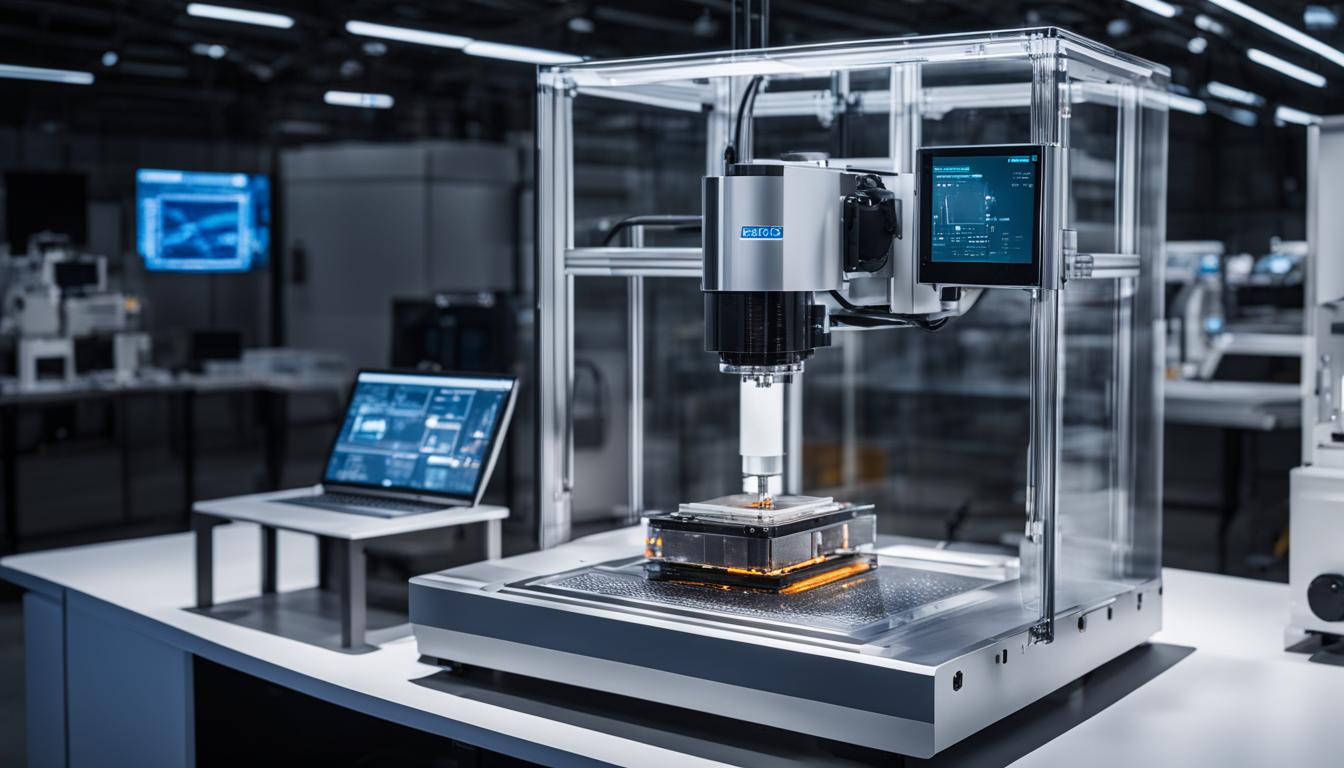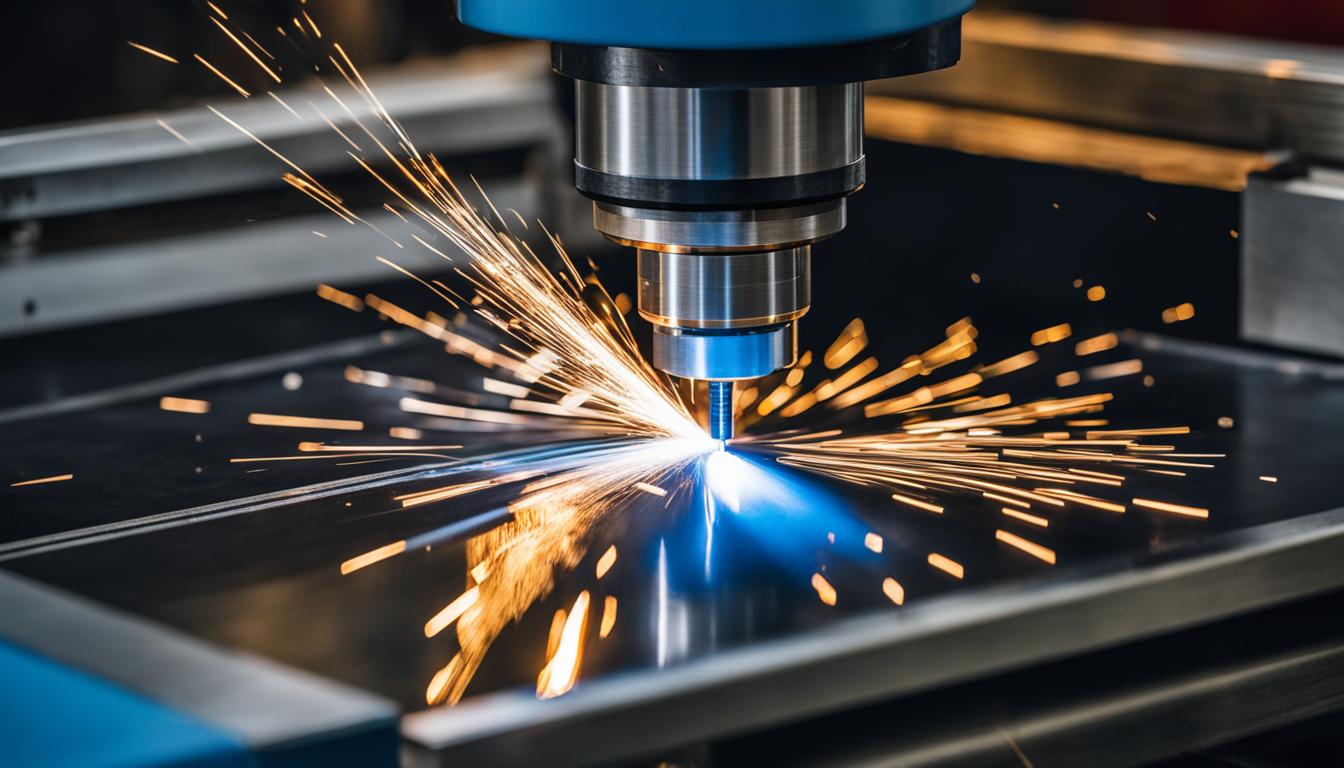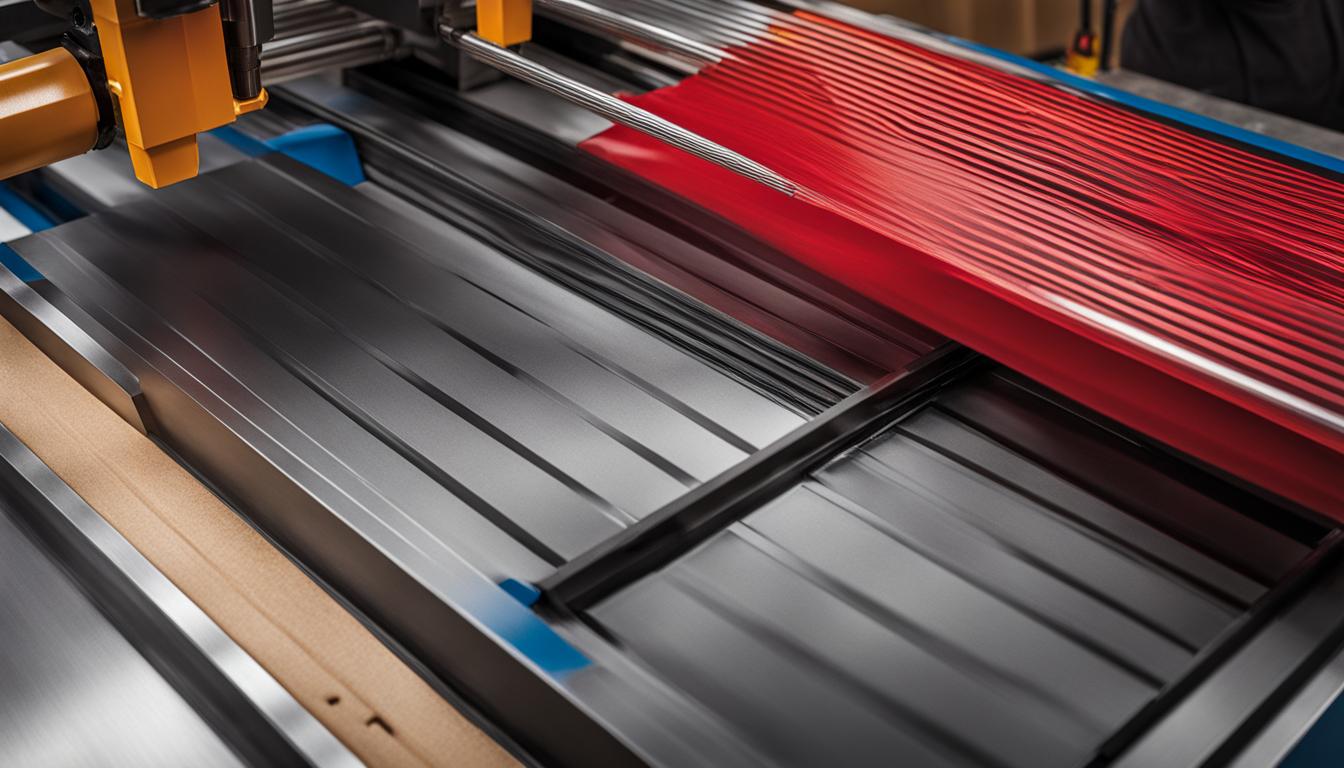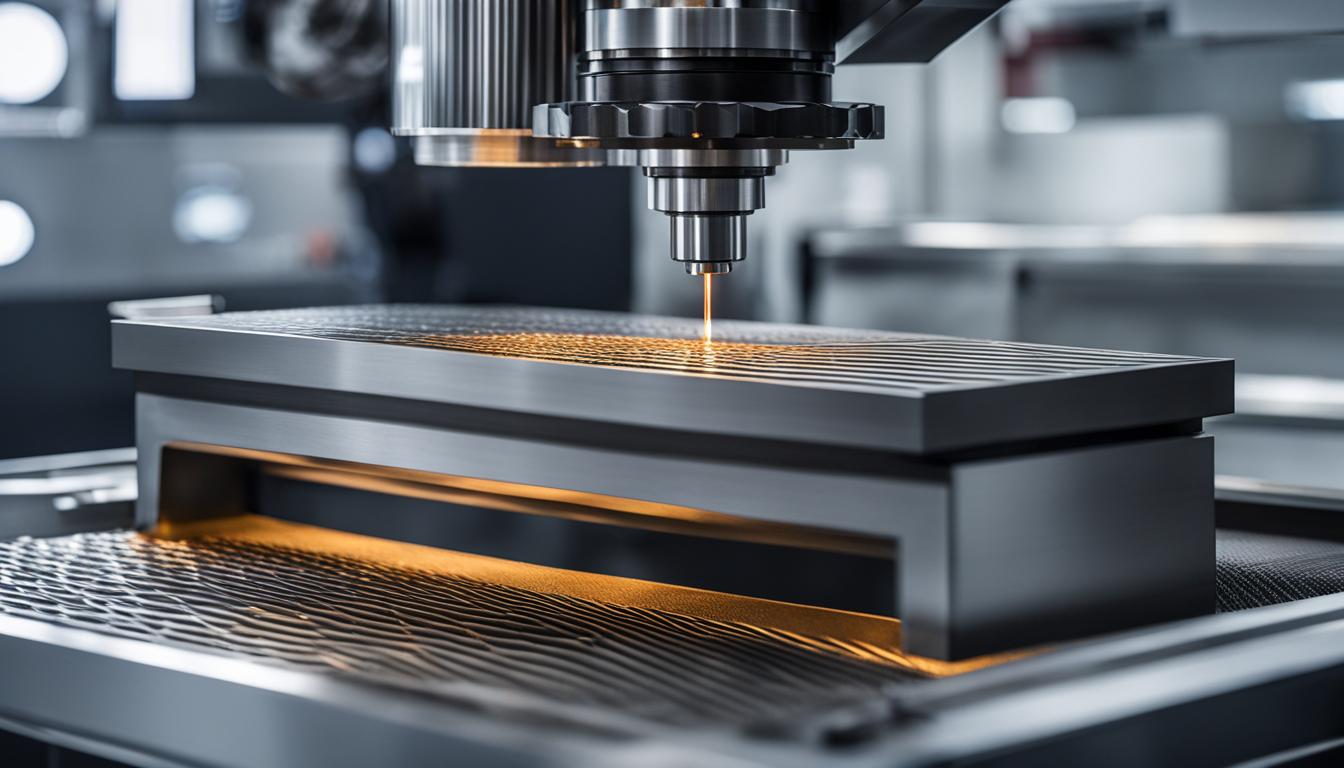CNC milling has witnessed remarkable advancements in material science, leading to the exploration and utilization of new materials in the manufacturing process. As we look towards the year 2024, several materials are poised to revolutionize CNC milling, offering enhanced performance and capabilities. These new materials hold tremendous potential to impact various industries, including automotive, aerospace, and electronics. With the continuous evolution of material science, CNC milling is set to reach new heights in terms of precision, efficiency, and overall product quality.
In this article, we will delve into the exciting trends and innovations in CNC milling, focusing on the advancements in material science. We will explore the implications of these new materials on CNC milling in 2024, as well as the potential benefits they bring to different sectors. Join us as we uncover the latest developments in material science and their impact on the ever-evolving world of CNC milling.
The Rise of Smart Factories and the Impact on CNC Milling
The concept of smart factories, part of the Industry 4.0 movement, has gained significant traction in recent years. Smart factories incorporate technologies such as IIoT, big data, artificial intelligence, and advanced analytics to transform production environments. In the context of CNC milling, these technologies enable improved automation, data-driven decision-making, and enhanced process control. The integration of smart factory principles with CNC milling has the potential to optimize production efficiency, reduce costs, and improve product quality.
The rise of smart factories has revolutionized the manufacturing landscape, including the field of CNC milling. With the implementation of IIoT, machines are interconnected, enabling real-time data collection and analysis. This data, combined with advanced analytics and artificial intelligence algorithms, allows manufacturers to monitor, predict, and optimize production processes. From predictive maintenance to real-time quality control, smart factories have the ability to streamline operations and maximize productivity in CNC milling.
Big data analytics plays a crucial role in the smart factory ecosystem. By leveraging the power of big data, manufacturers can gain valuable insights into their CNC milling processes. These insights enable proactive decision-making, identifying areas for improvement, and optimizing resource utilization. Additionally, advanced analytics algorithms can detect patterns and anomalies, helping to identify potential issues before they impact production. This proactive approach allows manufacturers to minimize downtime, reduce costs, and enhance overall operational efficiency.
Advantages of Smart Factories in CNC Milling:
- Improved automation and process control
- Real-time data collection and analysis
- Optimized production efficiency
- Reduced costs and increased cost-effectiveness
- Enhanced product quality and consistency
- Proactive maintenance and reduced downtime
| Advantages of Smart Factories | Impact on CNC Milling |
|---|---|
| Improved automation and process control | Enhanced precision and accuracy in CNC milling operations |
| Real-time data collection and analysis | Optimized decision-making based on real-time insights |
| Reduced costs and increased cost-effectiveness | Efficient resource utilization and minimized waste |
| Enhanced product quality and consistency | Consistent and high-quality end products |
| Proactive maintenance and reduced downtime | Minimized equipment failure and production interruptions |
The Role of AI, Machine Learning, and Advanced Analytics in CNC Milling
In the world of CNC milling, the integration of artificial intelligence (AI), machine learning, and advanced analytics is revolutionizing the manufacturing process. These technologies offer new opportunities to optimize operations, improve efficiency, and enhance overall productivity.
One key application of AI and machine learning in CNC milling is data analysis. By analyzing large sets of data, manufacturers can gain valuable insights into machine performance, tool wear, and material properties. This data-driven approach enables predictive maintenance, allowing for proactive machine servicing and reducing downtime. By identifying potential issues before they occur, manufacturers can optimize production schedules and minimize costly interruptions.
Advanced analytics further enhance the capabilities of AI and machine learning in CNC milling. By leveraging statistical modeling and algorithms, manufacturers can identify patterns and anomalies in the data, leading to more accurate predictions and process optimization. These techniques enable manufacturers to make data-driven decisions, improving efficiency and maximizing output.
Overall, the integration of AI, machine learning, and advanced analytics in CNC milling brings significant benefits. It enables manufacturers to harness the power of data, optimize processes, and achieve higher levels of efficiency and productivity. As the technology continues to evolve, we can expect even greater advancements in the field of CNC milling.
Benefits of AI, Machine Learning, and Advanced Analytics in CNC Milling:
- Predictive maintenance for proactive machine servicing and reduced downtime.
- Data-driven decision-making for optimized production schedules and efficiency.
- Accurate predictions and process optimization through advanced analytics.
- Improved efficiency and productivity in CNC milling operations.
| AI, Machine Learning, and Advanced Analytics | Benefits |
|---|---|
| Predictive maintenance | Proactive machine servicing and reduced downtime |
| Data-driven decision-making | Optimized production schedules and efficiency |
| Advanced analytics | Accurate predictions and process optimization |
| Overall impact | Improved efficiency and productivity in CNC milling operations |
The Advantages of Predictive Maintenance and Digital Twin Technology in CNC Milling
Predictive maintenance and digital twin technology are revolutionizing the field of CNC milling, offering significant advantages in terms of equipment reliability, uptime, and cost reduction. By leveraging the power of data analysis and machine learning, manufacturers can proactively identify and address potential equipment failures before they occur, minimizing unplanned downtime and optimizing maintenance schedules.
One of the key benefits of predictive maintenance in CNC milling is its ability to predict and prevent equipment failures. By continuously monitoring data collected from sensors, machines, and other sources, predictive maintenance algorithms can detect early warning signs of potential malfunctions or wear and tear in critical components. This enables manufacturers to schedule maintenance activities during planned downtime, reducing the risk of unexpected breakdowns and optimizing operational efficiency.
Another advantage of predictive maintenance is its cost reduction potential. By minimizing equipment failures and unplanned downtime, manufacturers can save on the costs associated with emergency repairs, replacement parts, and lost production time. Additionally, predictive maintenance allows for more efficient allocation of resources, as maintenance activities can be scheduled based on actual equipment conditions rather than fixed time intervals. This proactive approach to maintenance can lead to significant cost savings and improved overall productivity.
Complementing predictive maintenance is the use of digital twin technology in CNC milling. A digital twin is a virtual representation of a physical asset or machinery, created by collecting and analyzing real-time data from sensors and other sources. With a digital twin, manufacturers can simulate and optimize machine performance, predict potential issues, and make data-driven decisions to improve efficiency and reduce downtime. Digital twins enable manufacturers to analyze the impact of different operating conditions, optimize tool paths, and experiment with various parameters without affecting actual production environments.

The Benefits of Digital Twin Technology in CNC Milling:
- Simulation-based optimization for process improvement
- Predictive analytics for identifying potential issues
- Real-time monitoring and analysis of machine performance
- Data-driven decision-making for improved efficiency
- Reduced downtime through proactive maintenance
- Enhanced understanding of machine behavior and performance
By combining predictive maintenance and digital twin technology, manufacturers can achieve higher levels of equipment reliability, minimize downtime, and optimize overall CNC milling operations. The ability to anticipate and prevent equipment failures, coupled with the power of virtual simulations and data analysis, empowers manufacturers to make informed decisions, improve productivity, and reduce costs.
| Predictive Maintenance | Digital Twin Technology | |
|---|---|---|
| Advantages |
|
|
| Benefit | Higher equipment reliability, reduced downtime, and optimized CNC milling operations | |
The Impact of Supply Chain Restructuring on CNC Milling
The global supply chain landscape is undergoing significant restructuring, which has a profound impact on CNC milling and manufacturing operations. One of the key trends emerging in recent years is reshoring, the practice of bringing manufacturing operations back to domestic or local markets. Reshoring has gained momentum due to various factors, including supply chain disruptions, rising labor costs in offshoring countries, and an increased focus on sustainability.
Reshoring and sourcing from closer locations offer several advantages for CNC milling operations. Firstly, it allows for improved control over the production process, ensuring better quality control and adherence to specifications. Having manufacturing closer to the consumer market also reduces lead times and enables faster response to changing customer demands. Moreover, proximity to suppliers and customers can lead to cost savings in logistics and transportation, as well as improved flexibility in managing inventory and order fulfillment.
In addition to reshoring, supply chain restructuring also involves a reevaluation of sourcing strategies. With increased globalization and the opening of new markets, manufacturers have multiple options for sourcing raw materials, components, and parts. By strategically selecting suppliers and diversifying sourcing locations, CNC milling companies can mitigate risks associated with supply chain disruptions, geopolitical factors, and currency fluctuations. Such a robust and agile sourcing strategy helps ensure the continuity of manufacturing operations and minimizes the impact of market uncertainties.
The Benefits of Supply Chain Restructuring in CNC Milling:
- Improved control over the production process
- Reduced lead times and faster response to customer demands
- Cost savings in logistics and transportation
- Inventory management and order fulfillment flexibility
- Decreased risks associated with supply chain disruptions
- Enhanced resilience to geopolitical factors and currency fluctuations
As supply chains continue to evolve, manufacturers need to adapt and realign their operations to optimize cost-efficiency, minimize risks, and remain competitive in the dynamic global market. The impact of supply chain restructuring on CNC milling is evident, enabling companies to leverage reshoring and strategic sourcing to enhance their manufacturing capabilities and drive long-term success.
| Impact of Supply Chain Restructuring on CNC Milling |
|---|
| Advantages |
| Improved control over the production process |
| Reduced lead times and faster response to customer demands |
| Cost savings in logistics and transportation |
| Inventory management and order fulfillment flexibility |
| Decreased risks associated with supply chain disruptions |
| Enhanced resilience to geopolitical factors and currency fluctuations |
The Role of Metal Materials in CNC Milling
Metal materials are integral to the CNC milling process, offering a range of properties and advantages that make them essential for manufacturing various components. Understanding the characteristics and machinability of different metal materials is crucial for optimizing CNC milling processes and achieving high-quality results.
The Versatility of Aluminum
Aluminum alloys, such as 6061 and 7075, are widely used in CNC milling due to their lightweight properties, excellent corrosion resistance, and versatility. They are commonly employed in industries such as automotive, aerospace, and electronics. Aluminum alloys offer good machinability, allowing for efficient milling and precision in creating complex shapes and designs.
The Strength of Steel
Steel is another important metal material in CNC milling, known for its high strength, durability, and ability to withstand extreme conditions. Stainless steel varieties, including 303, 304, and 316, are commonly used in industries such as medical, automotive, and construction. Steel can be challenging to machine due to its hardness, but with the right tools and techniques, it can be precisely milled to meet specific requirements.
The Unique Qualities of Brass and Titanium
Brass is a metal material known for its excellent workability and unique properties, such as antimicrobial features. It is commonly used in industries like plumbing, electrical, and musical instruments. CNC milling brass offers the ability to create intricate details and achieve tight tolerances. On the other hand, titanium is known for its exceptional strength-to-weight ratio, corrosion resistance, and biocompatibility. It finds applications in aerospace, biomedical, and marine industries, where lightweight yet robust components are necessary.

| Metal Material | Properties | Applications |
|---|---|---|
| Aluminum | Lightweight, corrosion-resistant | Aerospace, automotive, electronics |
| Steel | High strength, durability | Construction, automotive, medical |
| Brass | Workability, antimicrobial features | Plumbing, electrical, musical instruments |
| Titanium | High strength-to-weight ratio, corrosion resistance, biocompatibility | Aerospace, biomedical, marine |
The Role of Plastic Materials in CNC Milling
Plastic materials play a vital role in CNC milling, offering a wide range of benefits and applications. These materials are known for their versatility, strength, and ease of machinability, making them a popular choice for various industries. In CNC milling, plastic materials such as ABS, Nylon, and PMMA Acrylic are widely used due to their unique properties and characteristics.
ABS (Acrylonitrile Butadiene Styrene) is a tough and impact-resistant plastic widely used in CNC milling. It is known for its excellent dimensional stability, making it ideal for rapid prototyping and the production of consumer and industrial products. With its good chemical resistance and machinability, ABS is a reliable material choice for a wide range of applications.
Nylon, another commonly used plastic in CNC milling, offers high tensile strength and durability. It is a versatile material that finds applications in textiles, mechanical parts, and various other industries. Nylon’s excellent wear resistance and machinability make it a preferred choice for manufacturing components with complex geometries and tight tolerances.
PMMA Acrylic, known for its transparency and resistance to scratching, is a popular plastic material in CNC milling. It is often used for optical parts, displays, and food storage containers. PMMA Acrylic’s excellent optical properties, machinability, and durability make it a reliable choice for applications that require clarity and visual appeal.
The table below summarizes the key properties and machinability of these plastic materials in CNC milling:
| Plastic Material | Key Properties | Machinability |
|---|---|---|
| ABS | Tough, impact-resistant, good dimensional stability, chemical resistance | Good |
| Nylon | High tensile strength, durability, wear resistance | Good |
| PMMA Acrylic | Transparency, resistance to scratching, optical clarity | Good |
Understanding the properties and machinability of plastic materials is crucial for optimizing CNC milling processes and achieving desired results. Manufacturers should consider the specific requirements of their projects and choose the appropriate plastic material that aligns with their needs in terms of strength, durability, and aesthetics.

The Future of Material Science in CNC Milling: Trends and Innovations
The field of material science in CNC milling is constantly evolving, with advancements and innovations shaping the future of the industry. As technology continues to progress, manufacturers are introducing materials with enhanced properties to meet the diverse demands of various industries. Improved strength, durability, and conductivity are just some of the key characteristics being targeted.
One area of innovation lies in composite materials, which offer a combination of different properties to create materials with superior performance. These composites can be tailored to specific applications, providing optimal strength-to-weight ratios and enhanced resistance to wear and tear. Such materials have the potential to revolutionize CNC milling, enabling the production of lighter and stronger components.
In addition to composite materials, the development of advanced coatings is another trend to watch. These coatings enhance surface hardness, reduce friction, and provide resistance against harsh environments. By incorporating these coatings into CNC milling processes, manufacturers can significantly improve the longevity and performance of their products.
Furthermore, additive manufacturing techniques are opening new avenues for material science in CNC milling. This approach allows for the creation of complex geometries and the incorporation of unique material properties. By combining different materials and using precise layering methods, manufacturers can achieve unprecedented levels of customization and performance.
